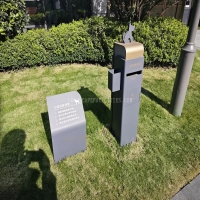Welcome to the website for landscape facilities products and knowledge.
How does the table’s design support creative brainstorming or visual collaboration tools like whiteboards?
In today's dynamic work environments, the humble table has evolved beyond its traditional function to become a catalyst for innovation and collaborative thinking. Modern table designs specifically engineered for creative sessions incorporate several groundbreaking features that seamlessly bridge the gap between conventional furniture and digital collaboration tools.
The integration of writable surfaces represents one of the most significant advancements in collaborative table design. Many contemporary tables feature built-in whiteboard tops or compatible surfaces that allow team members to spontaneously jot down ideas, sketch concepts, and visualize thoughts without interrupting their creative flow. This immediate accessibility eliminates the physical and psychological barriers that often occur when teams must repeatedly turn away from the table to use a wall-mounted whiteboard.
Advanced table designs further enhance collaboration through integrated technology solutions. Many models now incorporate embedded touchscreens, wireless charging capabilities, and connectivity ports that transform the table into a central hub for digital interaction. Teams can effortlessly share content from their devices onto table-integrated displays or connected whiteboards, creating a fluid exchange of digital and analog information. This technological synergy ensures that no idea gets lost in translation between different media formats.
The physical configuration of modern collaborative tables also plays a crucial role in facilitating visual brainstorming. Modular designs with adjustable heights and reconfigurable components accommodate various working styles and team sizes. Round and oval shapes promote equal participation by eliminating hierarchical seating arrangements, while strategically placed power sources and cable management systems maintain clear, unobstructed workspaces. These ergonomic considerations ensure that teams can focus entirely on their creative process without physical distractions.
Furthermore, the material selection in these specialized tables contributes significantly to their functionality. Non-porous, smooth surfaces ideal for dry-erase markers, scratch-resistant coatings that withstand frequent use, and durable construction that supports leaning and writing pressure all combine to create a reliable platform for continuous ideation. The subtle texture and color of these surfaces are often optimized to reduce glare and eye strain during extended brainstorming sessions.
The psychological impact of thoughtfully designed collaborative tables cannot be overstated. Unlike traditional conference tables that can create formal, restrictive atmospheres, these purpose-built surfaces encourage a more relaxed, experimental approach to problem-solving. The very presence of a writable, interactive surface invites participation and signals that every team member's input is valued and expected. This environmental cue can dramatically increase engagement levels and creative output.
As remote and hybrid work models become increasingly prevalent, some table designs now incorporate camera and audio systems that seamlessly connect in-person and virtual participants. This integration ensures that remote team members can equally contribute to visual brainstorming activities, viewing and interacting with the physical workspace as if they were present in the room. This technological bridge maintains the spontaneity and energy of collaborative sessions across geographical boundaries.
The convergence of furniture design and collaboration technology represents a fundamental shift in how we approach creative work. By transforming the table from a passive surface into an active participant in the brainstorming process, these innovative designs create environments where ideas can flow freely, connections become visible, and collective intelligence finds its optimal expression. The future of creative collaboration lies not in choosing between digital and analog tools, but in designs that harmoniously integrate both to amplify human creativity.
Related search:

Recommendation
Outdoor cat and dog feces trash can; Community pet trash can; Metal multi-color design